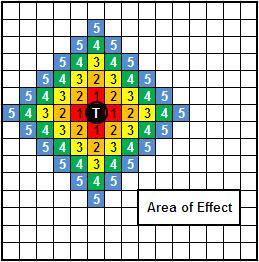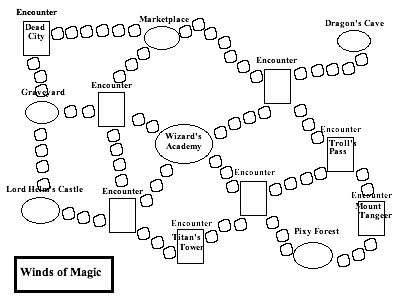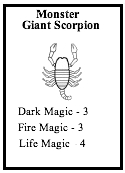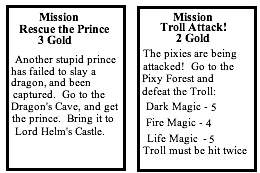(This Challenge has been completed.)
Game Design Showdown
March 2009 Challenge - "Sharing the Wind"
Design a board or card game that includes a shared component (or components) as a core part of the game with "Wind" as the theme.
Theme: Wind. This could be handled literally as the movement of air, or symbolically (Winds of Change/Fate/Time, etc.).
Additional Design Requirement:
One of the core mechanics of the game must have something to do with one or more components being shared between the players.
Formatting Request:
Please use the GDS formatting template as a reference to format your entries before submitting. No entry will be dismissed for lack of proper formatting, but entries based on the template will be greatly appreciated.
- Start Date: Thursday, 12-March-2009
- End Date: Thursday, 19-March-2009, Noon US Eastern time (approximately)
- Voting: Thusrday, 19-March-2009 through Thursday, 26-March-2009.
The 10 entries to this Challenge are posted below ...
Critique the Entries: Use the Critique Thread to post any constructive critiques about the individual entries to this Challenge.
See the Results: Check out the Voting Poll to see the results of the voting.
Comments or Questions: Comments and questions about this Challenge were handled on the Comments Thread.
GDS Details: For more details on how these Game Design Showdown Challenges work, visit the GDS Wiki Page.
Admin Note: This will be my last GDS Challenge that I will be hosting for a while. Due to work and other real-life obligations, I will not have the time to do much around here for a while. The rest of the BGDF Admin staff will share the role of hosting these monthly Challenges after this month's Challenge is completed.








Entry #1 - High-Flyin’ Tail Waggin’ Dragon Kite Fight!
by bluesea
Players are Dragon Kite Fight Handlers. This is a game of both combat and a manoeuvring race game. It is played out on a pyramidal board representing the limit of the battle-sky above. (Imagine this as a vertical cross section through the sky.)
MANOEUVRE CARDS
Players are dealt seven Manoeuvre Cards. (Number and distribution of cards TBC.) The cards are numbered 1-6 representing Manoeuvres of your kite through the air. Movement direction is determined relative to the bounding hex of the Kite. (See illustration below). For example a No6 card moves a Kite up, while moving down to the right requires No2 card. If a player’s Kite cannot move, he discards his cards, moves the Kite down two spaces, draws four cards, and ends his turn. Dragon Cards are wild for movement but have zero value in a Kite Fight (see below). The top of the Kite points in the direction of movement: A diving kite (Manoeuvre Nos 1,2,3) points downward.
WIND DIRECTION
The game begins setting +1 Movement Track on No1 and Zero Movement Track on No6, i.e. until the wind changes, movement in No1 direction gains a +1 and movement in No6 direction is forbidden.
The wind direction changes whenever a Manoeuvre Card is played with a wind symbol on it. To change the wind roll 1d6. (If two Cards with wind symbols are played the same turn, only roll once). The result is the direction of the wind indicating the direction of +1 movement. The opposite movement space is blocked, i.e., no movement is allowed directly into the wind. Place the GREEN +1 Wind Marker on the Wind Direction Track; place the BLACK No Movement Marker opposite.
KITE HANDLER TRACK
The Kite handler track represents the player moving along the ground to manoeuvre his kite. The track is marked with a Wind direction and Bonus movement points (e.g., 6/+2). If a player’s Kite Handler is on a space on the track and plays a card of the same wind direction, he may move additionally the bonus number of spaces (any direction).
ACTIONS SUMMARY
Players do ONE of the following: 1. Play one card and move one space OR play two cards and move two spaces. (Apply Wind +1 Bonus and apply Movement Bonuses from the Kite Handler Track). 2. Move the Kite Handler along the track max. two spaces. 3. If a player holds less than seven cards he may draw any number of cards from the draw pile. A player may hold a maximum of seven cards. You may not move and draw cards on the same turn.
KITE FIGHT COMBAT!!
At the end of a kite movement if two kites occupy the same bounding hex they MUST engage in combat. Combat is resolved with cards. When two kites occupy a bounding hex a Kite Fight begins: 1. If the player with the defending Kite has at least two cards in his hand, he can choose to retreat using typical movement rules. If the defending Kite retreats upwards, the attacking Kite is awarded two points, if downwards, one points. 2. If the defending player fights each player must play one card face down from their hands and reveal them simultaneously. The winner is the player with the higher valued card. The winner is awarded the difference between the two cards in points.
Notes: If a player only has one card he lays the card down. If a player has no cards, the opposing player still lays one card down and damage is determined as if the player with no cards has played a “zero” card. If neither player has cards, each player loses one point.)
VICTORY CONDITIONS
So players can win through artful manoeuvring or inflicting damage to his opponent.
DESIGN NOTES: